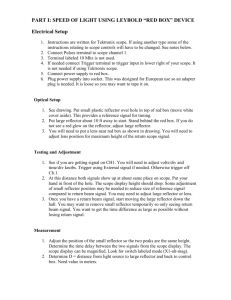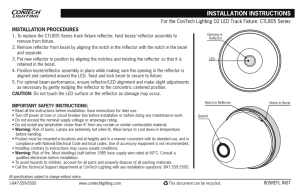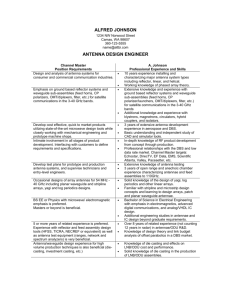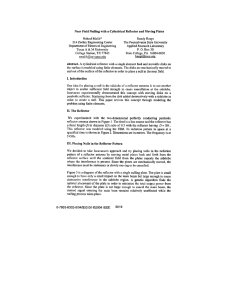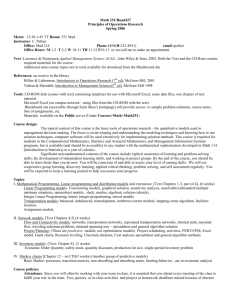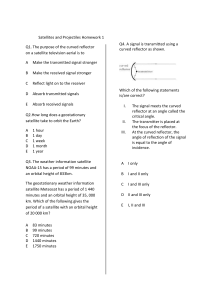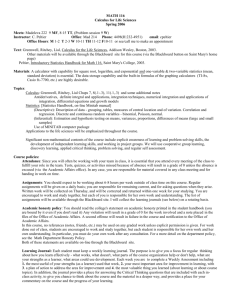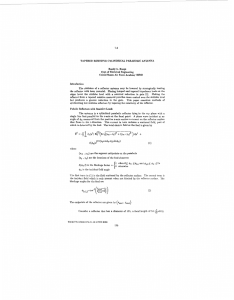*Randy Pennsylvania
advertisement
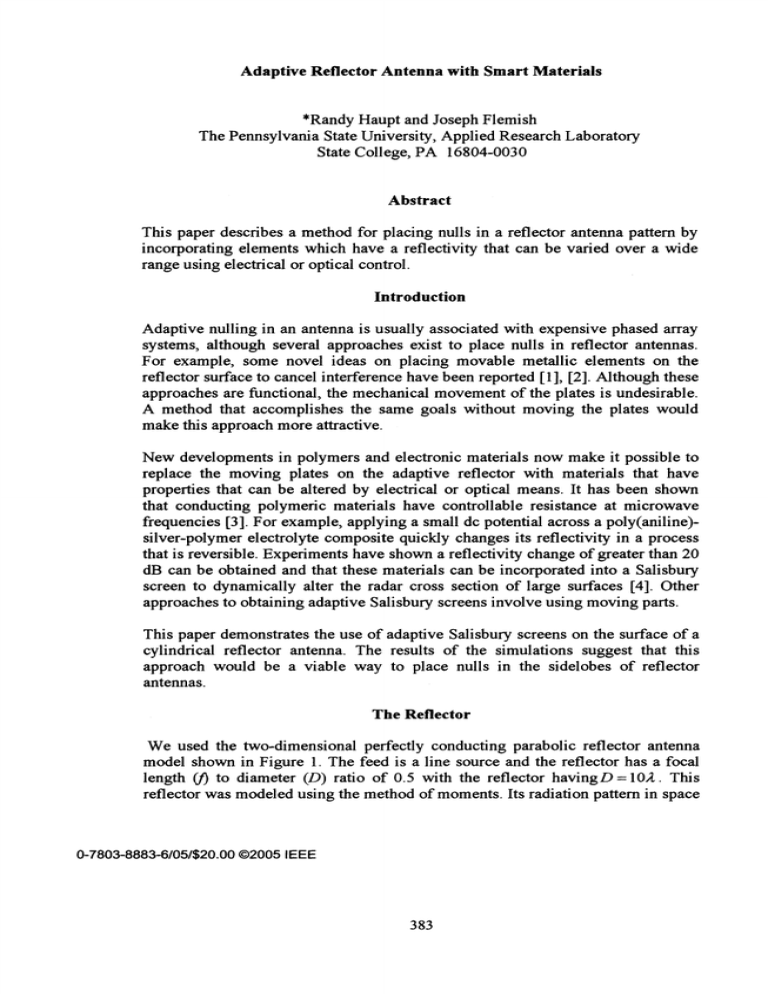
Adaptive Reflector Antenna with Smart Materials *Randy Haupt and Joseph Flemish The Pennsylvania State University, Applied Research Laboratory State College, PA 16804-0030 Abstract This paper describes a method for placing nulls in a reflector antenna pattern by incorporating elements which have a reflectivity that can be varied over a wide range using electrical or optical control. Introduction Adaptive nulling in an antenna is usually associated with expensive phased array systems, although several approaches exist to place nulls in reflector antennas. For example, some novel ideas on placing movable metallic elements on the reflector surface to cancel interference have been reported [1], [2]. Although these approaches are functional, the mechanical movement of the plates is undesirable. A method that accomplishes the same goals without moving the plates would make this approach more attractive. New developments in polymers and electronic materials now make it possible to replace the moving plates on the adaptive reflector with materials that have properties that can be altered by electrical or optical means. It has been shown that conducting polymeric materials have controllable resistance at microwave frequencies [3]. For example, applying a small dc potential across a poly(aniline)silver-polymer electrolyte composite quickly changes its reflectivity in a process that is reversible. Experiments have shown a reflectivity change of greater than 20 dB can be obtained and that these materials can be incorporated into a Salisbury screen to dynamically alter the radar cross section of large surfaces [4]. Other approaches to obtaining adaptive Salisbury screens involve using moving parts. This paper demonstrates the use of adaptive Salisbury screens on the surface of a cylindrical reflector antenna. The results of the simulations suggest that this approach would be a viable way to place nulls in the sidelobes of reflector antennas. The Reflector We used the two-dimensional perfectly conducting parabolic reflector antenna model shown in Figure 1. The feed is a line source and the reflector has a focal length (f) to diameter (D) ratio of 0.5 with the reflector havingD=102. This reflector was modeled using the method of moments. Its radiation pattern in space 0-7803-8883-6/05/$20.00 ©2005 IEEE 383 at a specified time is shown in Figure 2. The smart materials are Salisbury screens made from variable resistive sheets in front of the reflector surface extending from to the edges. / relector D eed F S j a!daptive |reflector elements conducting reflector x\ \ / ~~~~feed scattering Figure 1. The right reflector replaces the movable scattering element in the left reflector with smart material. Results A genetic algorithm (GA) varies the resistivity of the smart materials until the output power of the reflector antenna is minimized. Since the scattered field is too small to cancel the field at the main beam, but large enough to cancel a sidelobe, the desire signal entering the main beam is minimally affected, while the interference signal entering the sidelobe is eliminated. Figure 2 shows a plot of the adapted pattern (solid line) superimposed on the quiescent pattern (dashed line). The main beam gain goes down a couple of dB as a result of the deep null placed at 26.5 degrees. In this case, the GA placed the null very quickly as shown in Figure 3. Figure 4 shows the placement and values for the normalized (to free space) resistivity of the Salisbury screens. 384 E- -II ,It -20- -30 0 50 + in degrees Figure 2. Resulting null in the far field pattern due to the adaptable element. -50 -5 -10 -15 8-20populaton average -25 0 10 20 40 30 generation 50 60 Figure 3. The GA found the null very quickly as shown by this convergence plot. 385 /0;=0.224 4 2 .s O1 -2 \\=.982 4 -6 4 0 2 6 x in . Figure 4. Diagram of the adaptive reflector. -4 -2 Conclusions Electrically changing the reflectivity of parts of a reflector antenna surface can place nulls in the far field pattern sidelobes with some main beam degradation. References [1] [2] [3] [4] D. Jacavanco, "Reflector antenna having sidelobe suppression elements," U.S. Patent 4,631,547, Dec 23, 1986. J. L. Poirier, "Reflector antenna having sidelobe nulling assembly with metallic gratings," U.S. Patent 4,725,847, Feb 16, 1988. P.V. Wright, et.al., "Progress in smart microwave materials and structures," Smart Mater. Struct. vol. 9, no. 3, Jun 2000, pp. 273-279. B. Chambers, "Surfaces with adaptive radar reflection coefficients," Smart Mater. Struct. vol. 6, no. 5, Oct 1997, pp. 521-529. 386
